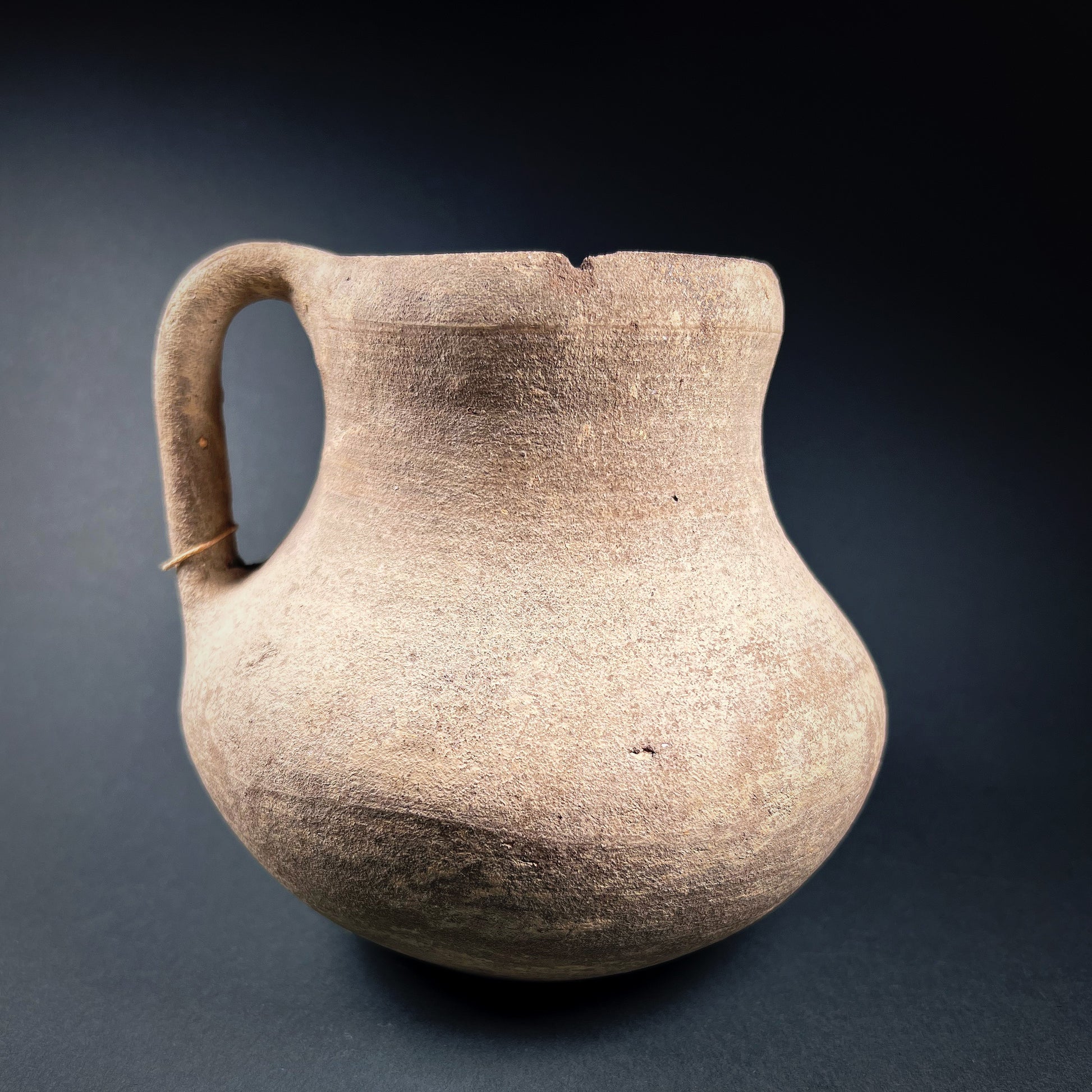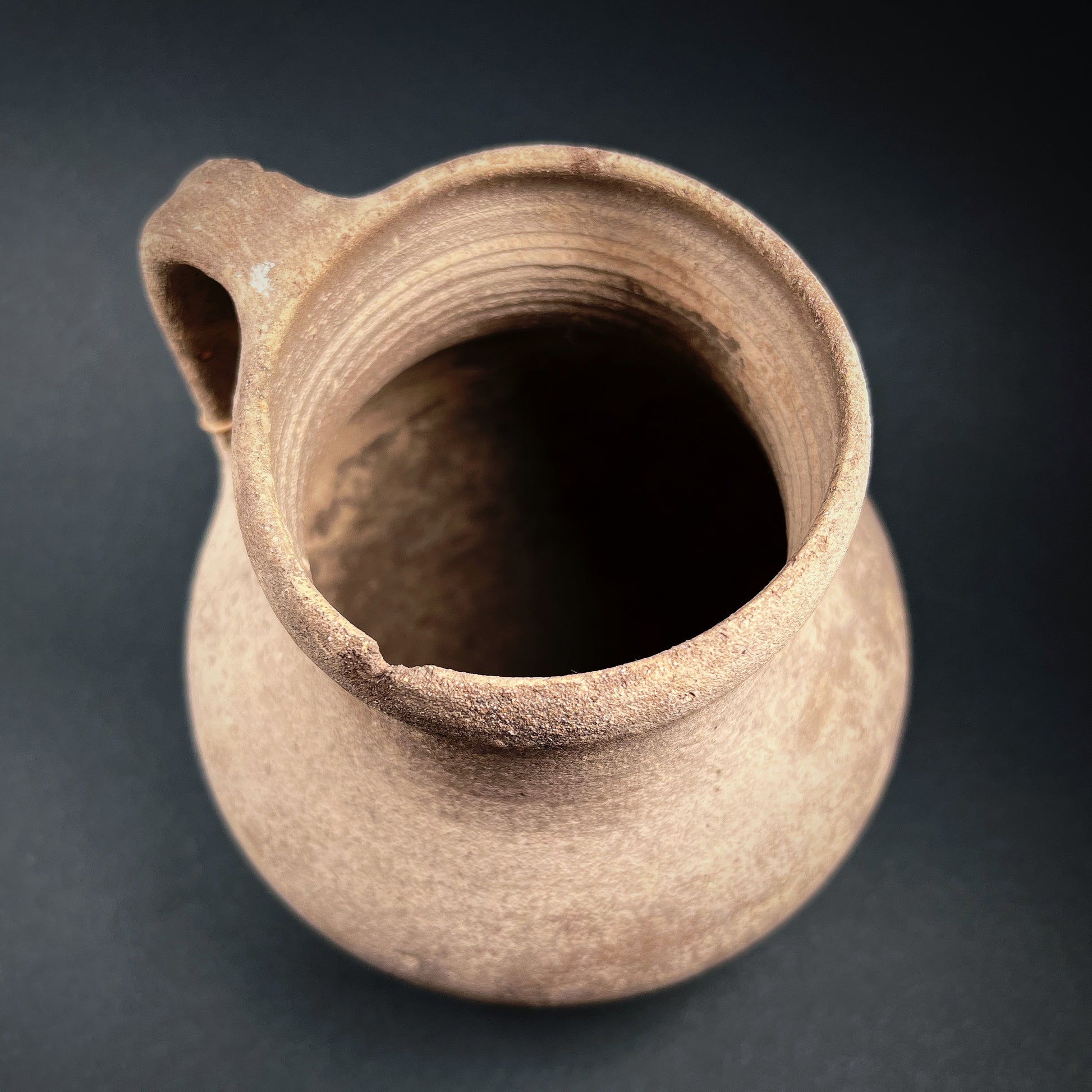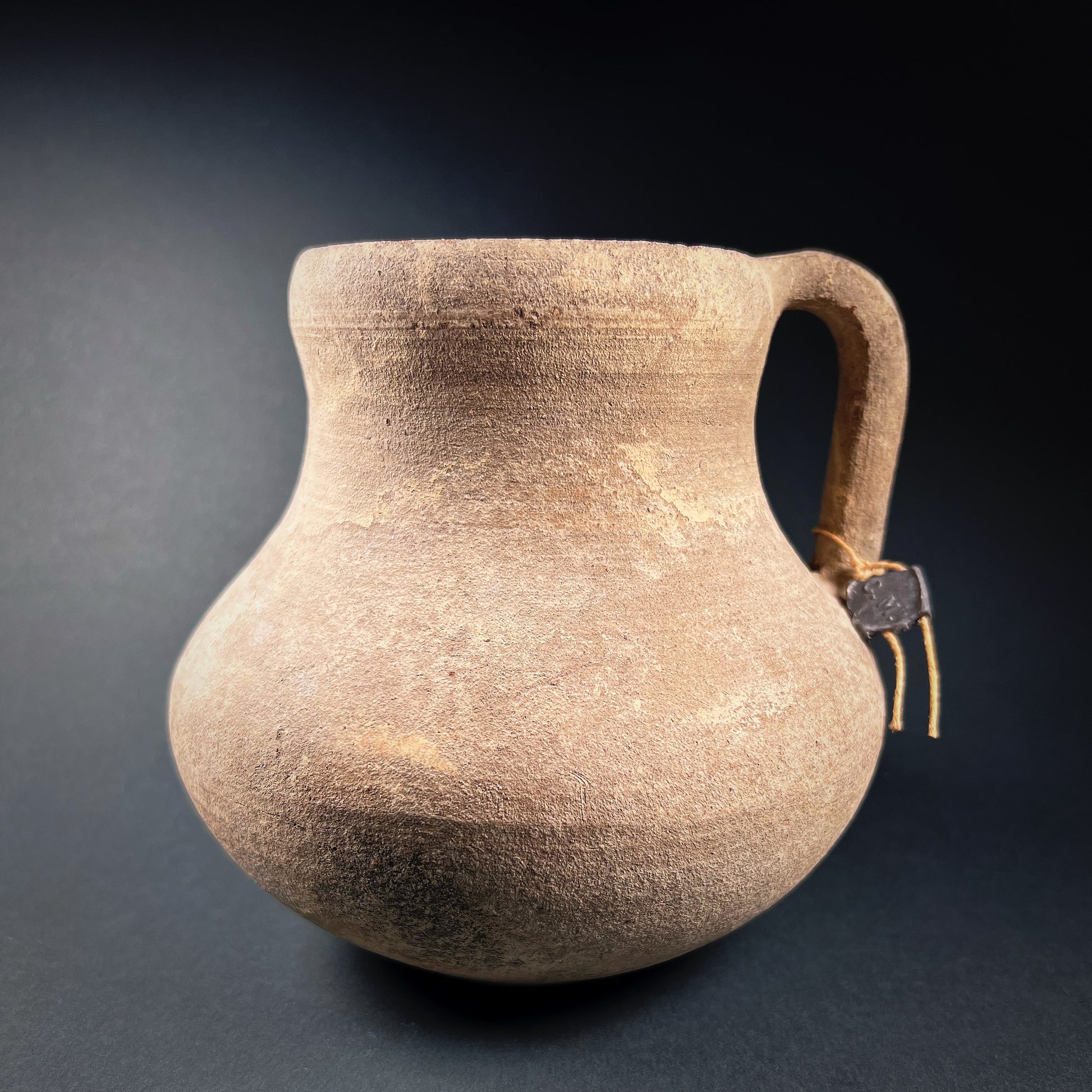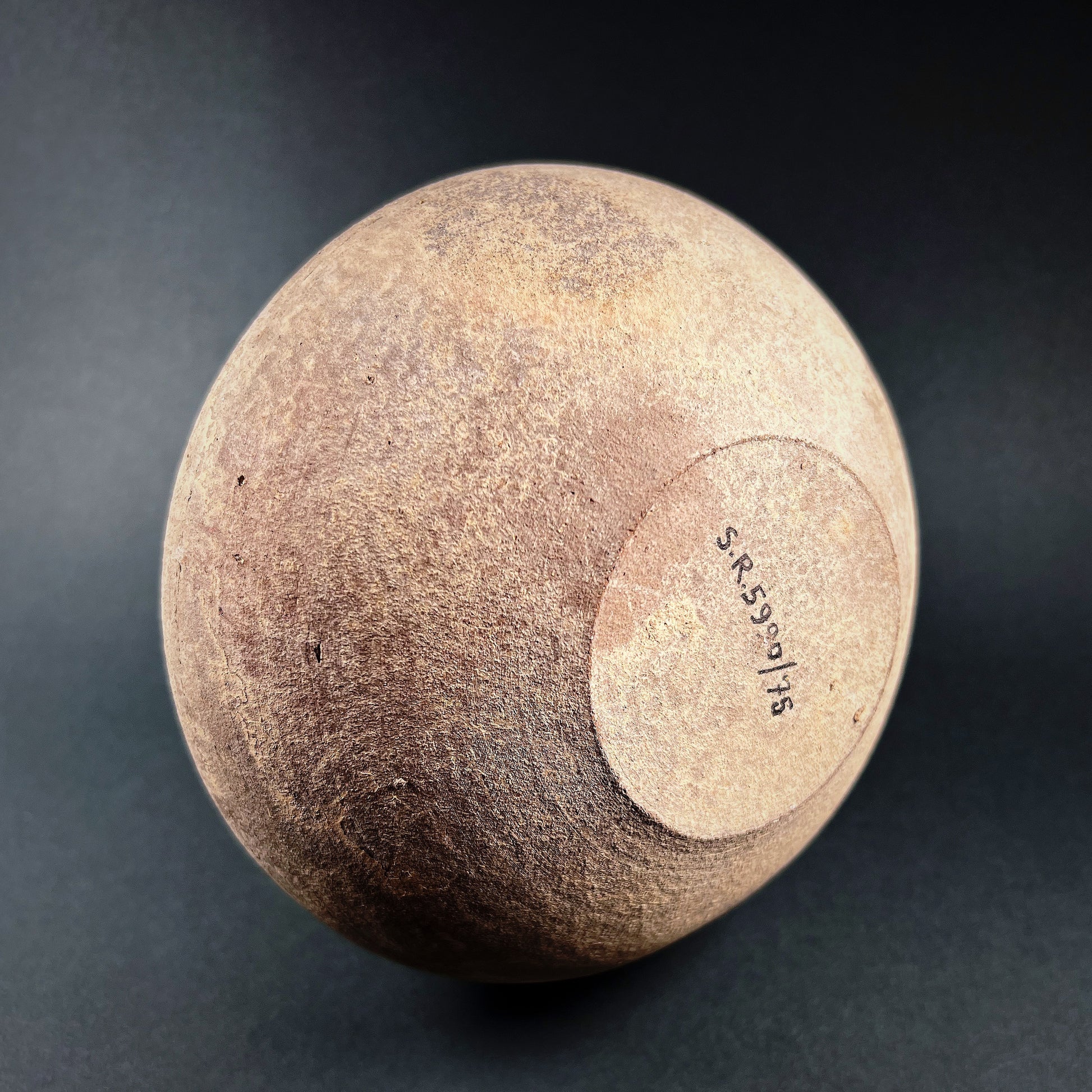Cypro-Classical Coarse Ware Jug
Cypro-Classical Coarse Ware Jug
Couldn't load pickup availability
Cypro-Classical I Period, c. 475–400 BC, Republic of Cyprus
This magnificent wheel-made pottery jug, crafted in Coarse Ware during the Cypro-Classical I period, exemplifies the functional elegance of ancient Cypriot ceramics. The jug features a finely potted, depressed globular body with a pronounced bulge resting on a flat base. Its wide, sinuous concave neck leads to an incurved rim, while a single strap handle extends gracefully from the shoulder to the rim. Made from coarse, grayish-red clay with small inclusions, the jug showcases the robust yet refined craftsmanship characteristic of this period.
Cypriot pottery has its origins in the Neolithic period and evolved significantly over the millennia, reflecting the island's interactions with neighboring Mediterranean cultures. During the Early and Middle Bronze Ages, Cypriot ceramics became known for their imaginative shapes and intricate decorations. By the Cypro-Classical period, pottery styles displayed a refinement that built upon earlier traditions, including those of the Cypro-Archaic era. This jug, with its globular form and practical strap handle, exemplifies the stylistic evolution of the dipper sack-shaped jugs of Levantine origin.
Cyprus’s geographical position as a crossroads of the Aegean, Anatolia, the Levant, and Egypt played a crucial role in shaping its artistic and cultural identity. Throughout the Classical period, Cyprus was under Persian control, which influenced its artistic and cultural developments. After gaining brief independence under Alexander the Great, the island was annexed by Ptolemaic Egypt, further enriching its cultural tapestry. This jug not only served as a utilitarian object but also stands as a testament to the skill and artistry of Cypriot potters during the Cypro-Classical period. Its timeless design and historical significance make it a prized artifact for collectors and enthusiasts of ancient Mediterranean ceramics.
Excellent condition. Intact. Minor chip on the rim, rootmarks and earthen deposits. Museum lead seal (CM) and number: S.R: 5990/75. Size approx. 14,0cm x 13,8cm x 13,8cm.
NB! Comes with original documents, including Licence to Export Antiquities No. 007222, issued under Antiquities Law, Cap. 43, Form Antiq. 1. Republic of Cyprus, Department of Antiquities, dated and signed Director of Antiquities 29. March 1979.
Provenance:
Cyprus Archaeological Museum, Nicosia, Cyprus.
acquired from the above, 1979
with danish private collection
For a similar examples see:
Jug, The British Museum, Accession Number: 1982,0729.360 (https://www.britishmuseum.org/collection/object/G_1982-0729-360)
References and further reading:
Pottery of Geometric, Archaic and Classical periods in Cyprus, Anna, P. Georgiadou, Kyprios Character. History, Archaeology & Numismatics of Ancient Cyprus (kyprioscharacter.eie.gr/en/t/A0)
Pottery Types, Cypro-Geometric to Cypro-Classical, Einar Gjerstad, Opuscula Atheniensia. 7 (7): pp. 105–122, 1960.
Handbook of the Cesnola Collection of Antiquities from Cyprus, John L. Myres, The Metropolitan Museum of Art, 1914.
Swedish Cyprus Expedition IV, 2. The Cypro-geometric, Cypro-archaic and Cypro-classical Periods, Einar Gjerstad, Stockholm: Swedish Cyprus Expedition, 1948.
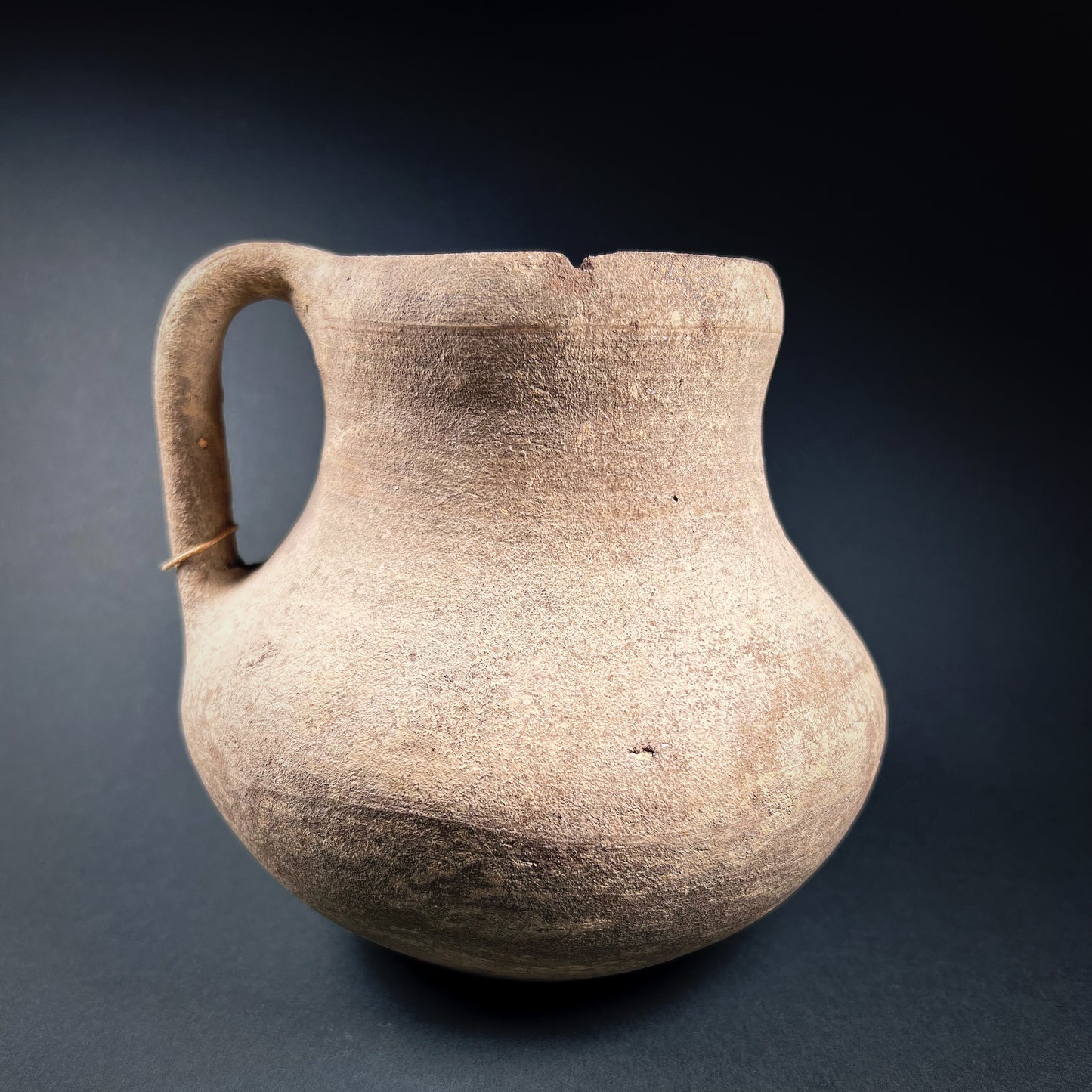
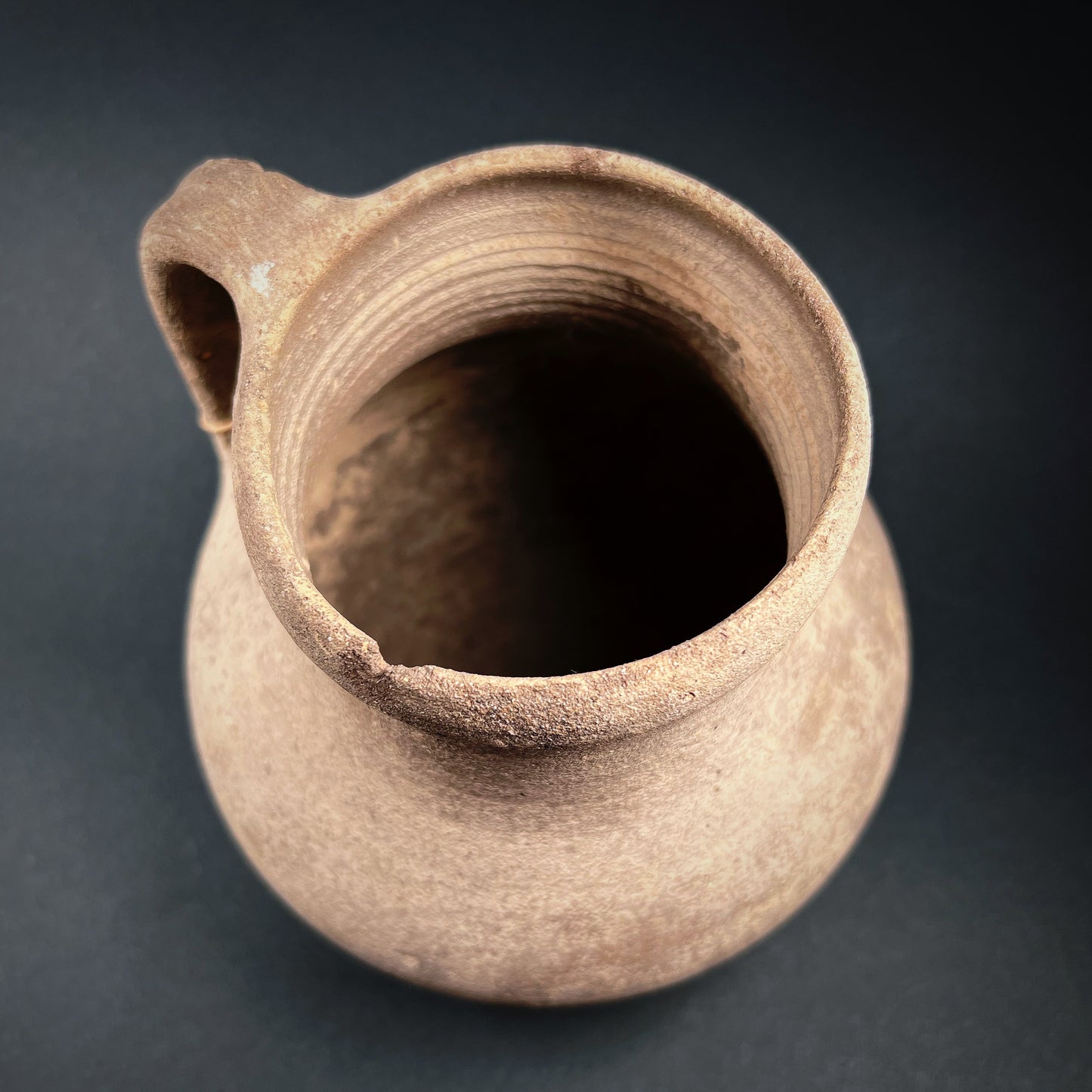
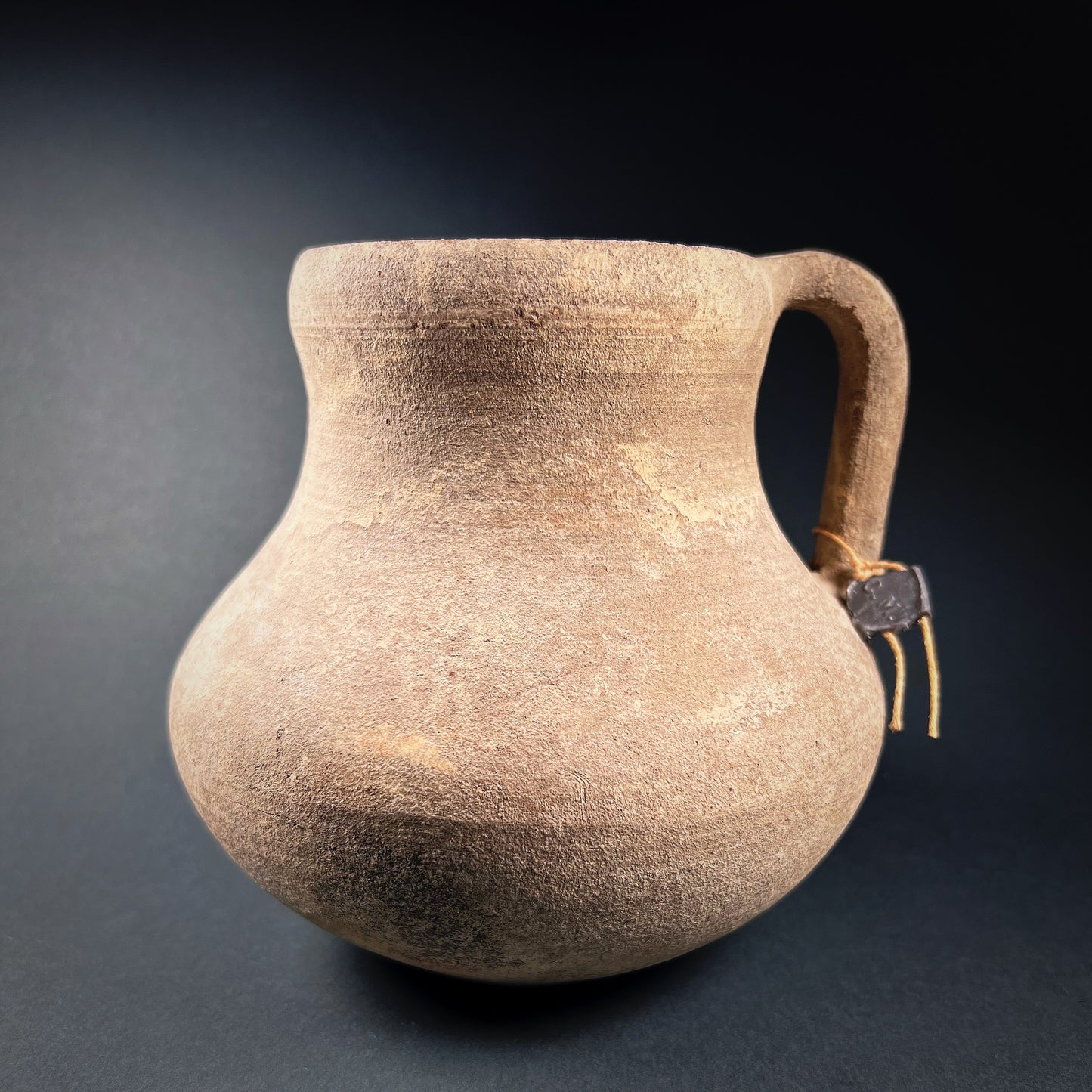
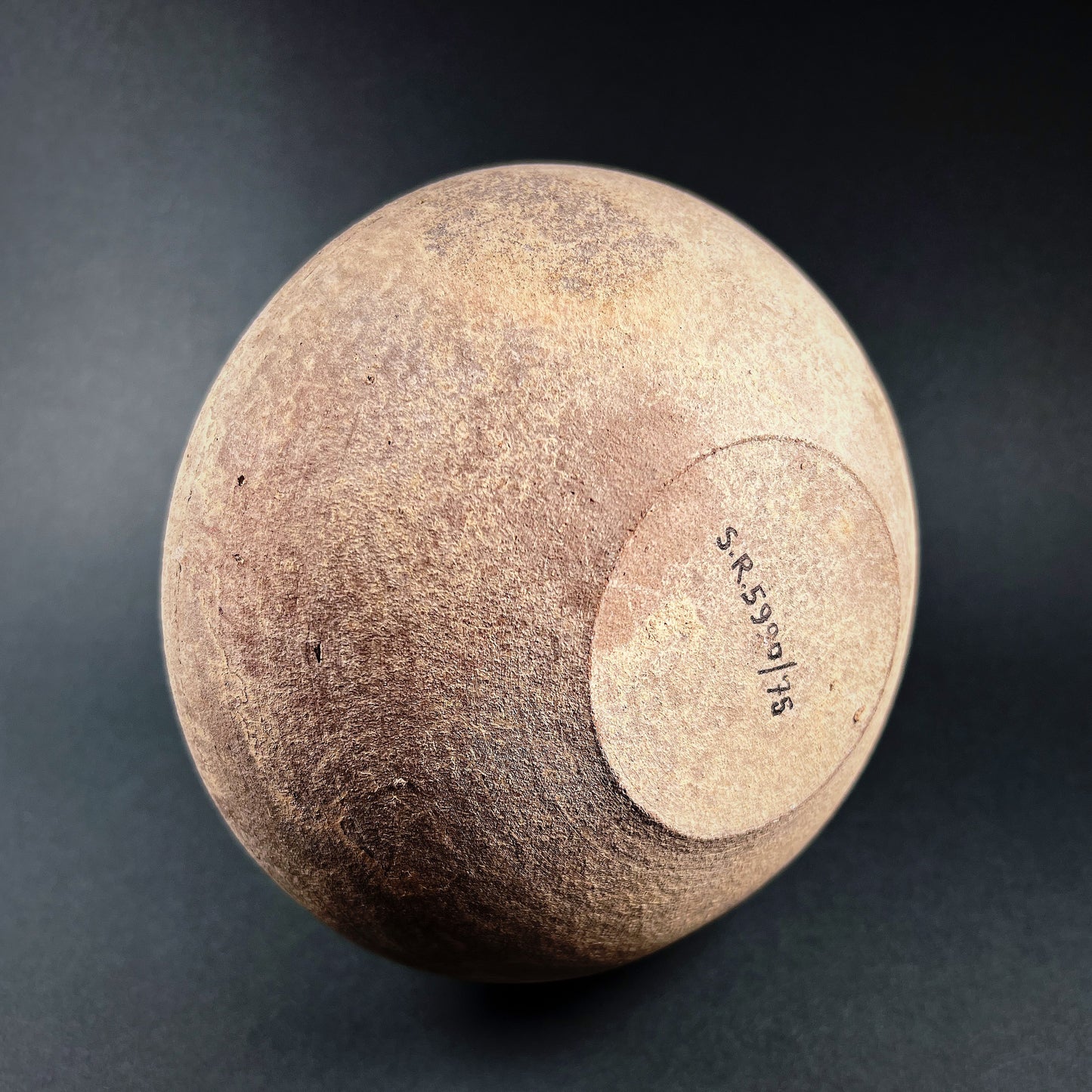
-
Shipping
The shipment will be prepared in the course of 3-5 days and dispatched via Posti Group Oyj or purchased item(s) can be picked up from our shop during the store's opening hours (Tarkk’ampujankatu 4, 00140, Helsinki, Finland). Within the Finland, all items are shipped via Posti Group Oyj unless otherwise requested. We pack the items carefully and mainly in recycled materials because we want to save nature. You will receive the tracking number for your items by e-mail.
-
Returns
Returns and exchange will be accepted within fourteen days (14) of receipt at the purchaser’s cost to include freight and packaging. Items must be returned in the same condition as when they were shipped, and will not be accepted if damaged or altered in any way. Please inform us via email (info@gotanmaailma.fi) or by calling +358408408352 before sending. We do not accept returns more than 14 days after delivery.

